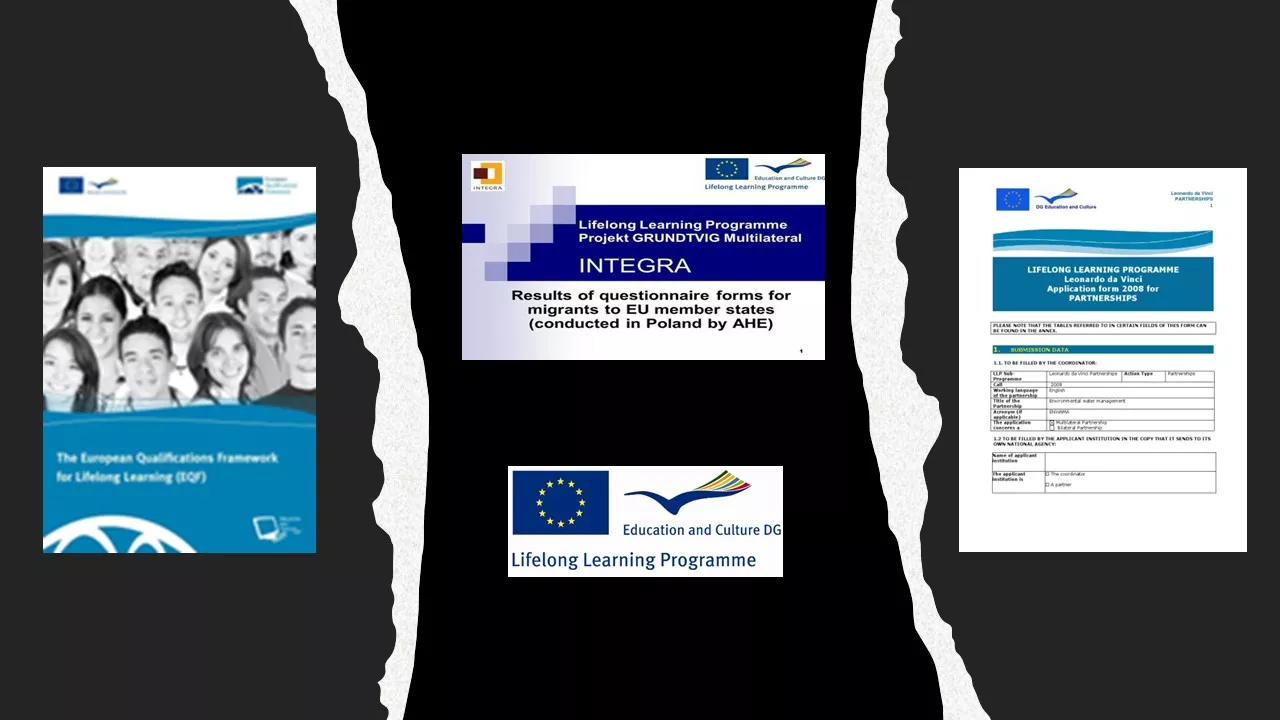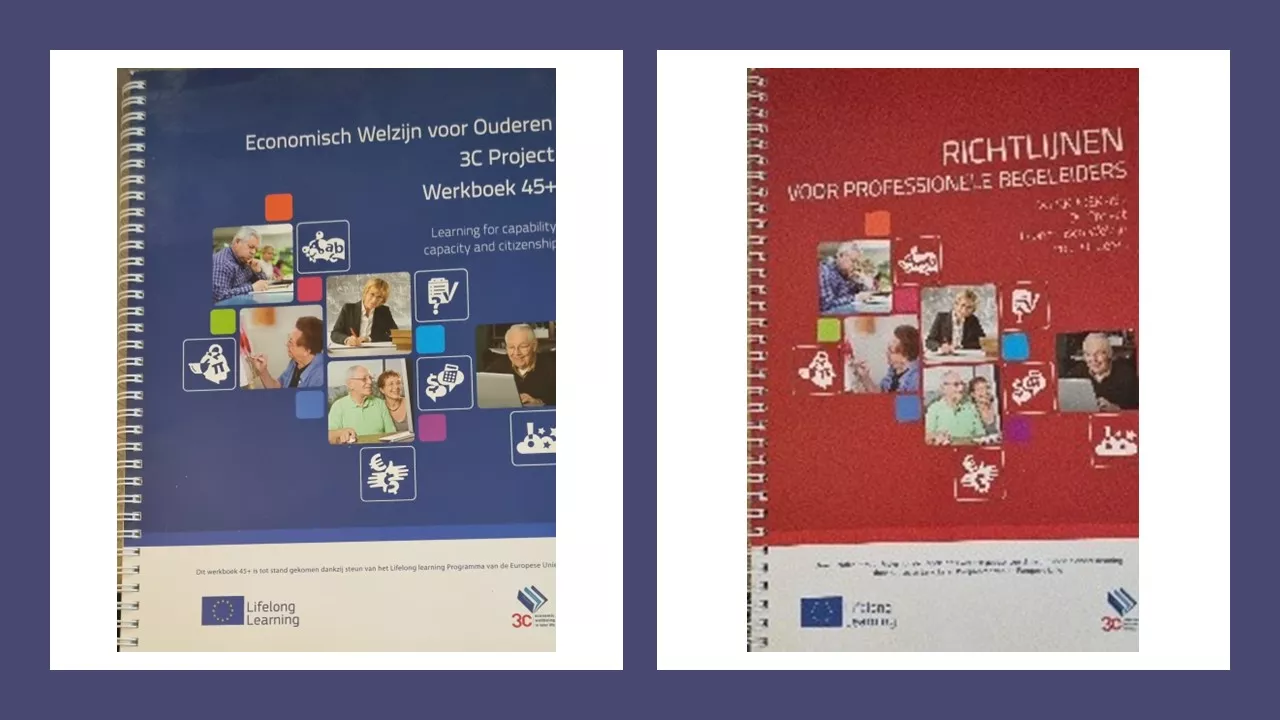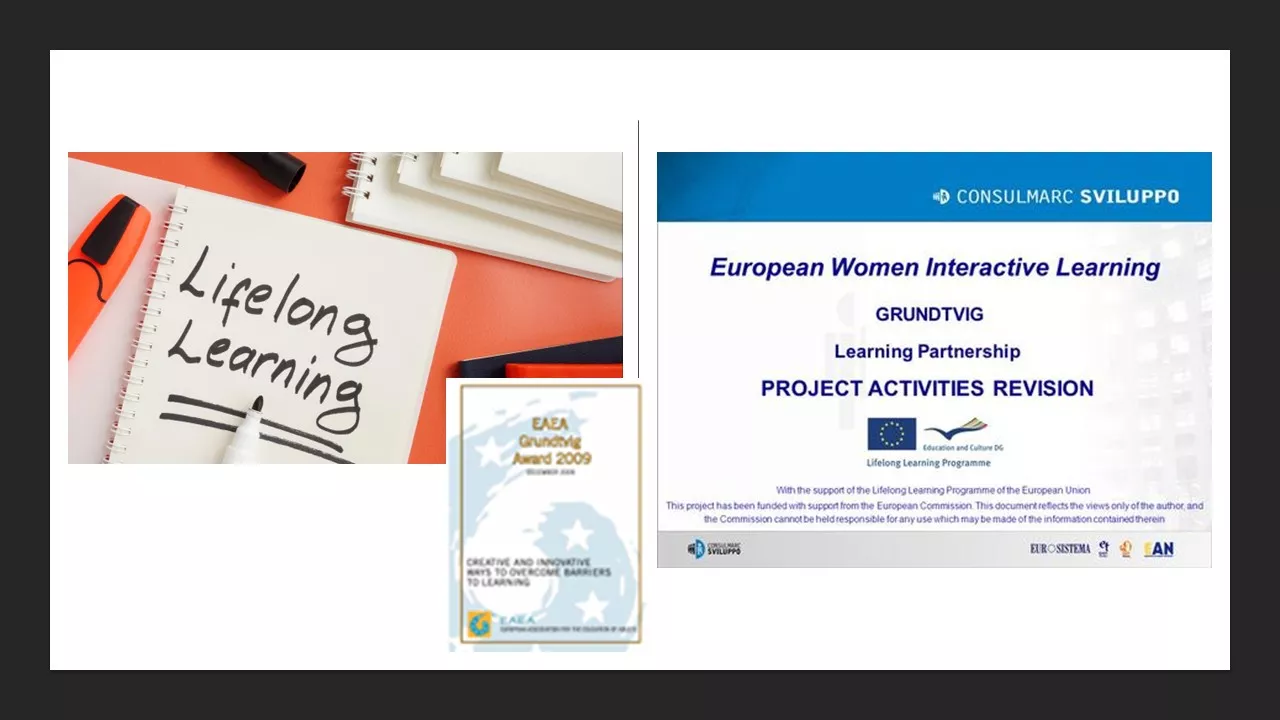Adult learning in the Lifelong Learning Programme
In a series of blogs, EPALE Ambassador Jumbo Klercq takes us through the history of how adult learning finally ended up in Erasmus+.
Introduction
In Socrates put adult education on the European map | EPALE I wrote about the first Socrates programme, in which adult learning was given a first chance thanks to the European policy on lifelong learning. In Socrates - Grundtvig, the leap forward | EPALE, we saw that adult learning was given its own identity in the Grundtvig programme 2000-2006. This third blog is about how Grundtvig was continued in the Lifelong Learning Programme (LLP) from 2007-2013.
The preparation phase
The Socrates programme was replaced by the LLP in 2007. That didn't happen overnight. Preparations started as early as 2004 with the evaluation of Socrates II. Subsequently, DG EAC's policy officers started to develop a first draft for a new programme. In 2005, this first proposal was discussed in various working groups. For example, there was a group of representatives of the national agencies. For each of the sub-programmes, there was also a working group of experts from the field. As a board member of EAEA, the European Association of Education for Adults, I was allowed to participate in the working group on the adult education component. Different versions of the proposal were discussed in these working groups. In 2006, the proposal went into the political circuit: the European Commission, the Council of Education Ministers and the Committee on Culture and Education of the European Parliament. In the end, it was mainly about the preconditions, the budget, and its distribution over the sub-programmes. That was exciting because it was a significant increase compared to previous programs. Not all countries were in favour of this. After all, the last word was up to the European Parliament and then the LLP was a fact.
The LLP
The programme was new in that it included all previous initiatives from the 2000-2006 period: Socrates, Leonardo da Vinci, eLearning, and the Jean Monnet Action. That was no coincidence. At the start of Socrates II and the publication of the Memorandum in 2000, it was concluded that there was still a lot of work to be done, and that more attention needed to be paid to a few areas that had hitherto received little attention, such as informal learning and learning in later life. So one policy document after another appeared. The Council of the European Union published its Resolution on Lifelong Learning in 2002, which emphasised the 'cradle-to-grave' principle in educational provision. In 2006, the Commission published the communication "It is never too late to learn", which emphasised the contribution of education to employability, mobility, and social inclusion. And in 2007, the communication "It is always good to learn" followed with an action plan for adult learning (2008-2010). It was abundantly clear that the European Commission and the Council of Europe now considered education to be significant for the further development of a high-quality knowledge-based economy. There was also a sharp vision, namely that adult learning in all its forms increases the employability of learners and contributes to social inclusion, active citizenship, and personal development. Increasing participation and enabling adults to develop and renew their skills and competences throughout their lives were therefore central. This made the choice for one large coherent programme for education and training an obvious one: it was more rational, coherent, and effective. The LLP therefore had to lead to greater interaction between the different sectors, to better visibility, and to better cooperation.

The goals
It was therefore inevitable that the LLP of 2007-2013 was full of various high-flown objectives. Here is a comprehensive overview:
contribute to the development of quality lifelong learning and to the promotion of high performance, innovation, and the European dimension in systems and practices;
support the creation of a European area of lifelong learning;
contribute to the quality, attractiveness and accessibility of lifelong learning opportunities;
strengthen the contribution to social cohesion, active citizenship, intercultural dialogue, gender equality and personal fulfilment;
contribute to the promotion of creativity, competitiveness, employability and the development of the entrepreneurial spirit;
contribute to increasing participation in lifelong learning for people of all ages, including people with special needs and disadvantaged groups;
promote language learning and linguistic diversity;
support the development of ICT-based resources;
creating a sense of European citizenship based on respect for European values, as well as tolerance and respect for other peoples and cultures;
promote cooperation on quality assurance in all sectors of education and training;
improve their quality by encouraging the best use of results, innovative products and processes and the exchange of good practices.
The implementation of the LLP was to determine its coherence and complementarity with EU policies. It therefore had to make provision for learners with special needs and promote their integration into mainstream training. At the same time, it was also intended to promote equality between men and women, as well as awareness of cultural and linguistic diversity and multiculturalism as a means of combating racism, prejudice, and xenophobia. Briefly, there is no shortage of ambitions.
Major improvements
The LLP saw three significant improvements over Socrates II. In the first place, even more attention was paid to learning from, for and by adults through the emphasis on lifelong and life-wide learning. Secondly, there was more cohesion between non-vocational education and vocational education with the entry of Leonardo da Vinci into the LLP. Thirdly, the available budget has been tripled compared to Socrates II: EUR 6.970 billion for the period 2007-2013.

Sub-programmes
The programme had several sub-programmes, the most important of which were:
The Comenius programme to support actions for schools (from kindergartens to upper secondary education or equivalent), €0.906 billion (13%)
The Erasmus programme to support student exchanges in higher education, as well as university-college cooperation, €2.788 billion (40%)
The Leonardo da Vinci programme to support actions in the field of initial and continuing vocational education including student and apprentice exchanges, cooperation with university colleges, €1.743 billion (25%)
The Grundtvig programme to support actions in the field of adult learning €0.279 billion (4%)
Participation in the programme was open to the (now) 27 Member States, the 3 EFTA countries (Iceland, Liechtenstein, and Norway), Switzerland and the 3 candidate countries (Croatia, North Macedonia, and Turkey). In addition, cooperation with third countries and international organisations was also made possible under certain conditions.
Changes in the organisation
The management of the programme was largely decentralised to a network of national agencies, designated by the participating countries. They were responsible for financing all individual mobility programmes and partnerships, as well as for many multilateral projects. A limited number of projects were subject to a centralised approach, either by the European Commission itself or through the Education, Audiovisual and Culture Executive Agency (EACEA). National ministries were no longer commissioners but now became supervisors. A national agency was empowered to make its own decisions in accordance with Brussels regulations. The structure of the national agency also changed: Brussels strived as much as possible for one national agency per country, but that turned out not to be possible everywhere. Furthermore, the integration of the old programmes into the new LLP also meant different forms, different procedures, different projects (e.g. on innovation) and new project types (multilateral partnerships).

Different project application set-up
In the LLP, the emphasis was much more on the input compared to previous programmes. Content and working method became more emphatically central. The rational of the proposal was paramount: why this project proposal and how does it relate to the priorities of EU policy, the choice of the target group and a needs analysis. The project plan had to be divided into work packages and was thus closely related to the method of project-based work. A work package was seen as a specific part of a project consisting of a set of tasks, goals, and responsibilities. Structuring helped organise the work and allocate resources and time to various parts of the project.
Adults in the LLP and adult education within Grundtvig
In the preparation of the program, there was a lot of discussion about how much attention should be paid to adult learning. The question was whether there should be one strong adult programme or whether adult education should have a place in all sub-programmes. In the end, the latter view won out based on the idea that adult education should be visible everywhere within the LLP. The outcome of this discussion meant that vocational education for adults came under Leonardo and higher education for adults under Erasmus. In effect, this meant that Grundtvig mainly included non-formal non-qualifying adult education. So, Grundtvig became the smallest and least financially well-off part of the LLP. On the other hand, more money was made available for this than under Socrates II and, moreover, there was almost unlimited freedom to work with different target groups or themes. The aim was to provide adults with pathways to improve their knowledge and competences while responding to the educational challenge of the ageing of Europe's population. Social inclusion, equal opportunities and combating early school leaving were important priorities. Five actions were possible within Grundtvig. The national agency was responsible for the well-known mobility projects and the learning partnerships focusing on topics of mutual interest. The multilateral projects and thematic networks were part of the Brussels EACEA. The multilateral programmes were new. They were intended for development of innovative methodologies or for the transfer of innovation. In 2009, a new action was added, the senior volunteer projects, in which organizations from two countries could exchange several volunteers in 2 years.

Reactions from adult education
Adult education eagerly took advantage of the new opportunities offered by the LLP. Numerous project proposals were submitted, many more than could be granted. This partly depended on the available budgets per action and the distribution of budgets among the various countries. In a relatively large country such as Germany, more applications could be approved than in smaller countries such as the Netherlands or Belgium. In the West-European countries international projects were often only considered to complement the regular activities of educational institutions. In the new member states, but also in Turkey, however, many organisations were dependent on European subsidies for their survival. EAEA contributed to the dissemination and recognition of projects by announcing the Grundtvig Award since 2003 around an annually chosen theme. The chosen themes gave a good impression of the scope of Grundtvig within the LLP: basic skills, active citizenship, poverty reduction, equal opportunities, intercultural learning, barriers to learning, social inclusion, volunteering, activation of older learners, the fight against nationalism, chauvinism and xenophobia, and peace and cohesion in Europe. There were several pioneering projects, I will mention a few. The project Professionals Experience Integration in Turkey: 23 professionals from 8 countries in Europe travelled to a small town in Turkey where they participated in the same integration program as in their own country. The experiences of the participants were put on film and this film has now been shown in more than seventeen European countries. Another interesting project was Attract and Retain, in which ambassadors and mentors were used to recruit new students for basic education. Auch wir sind Europa was a project in which people with intellectual disabilities from four countries investigated how participation, learning opportunities and integration were organised there. BeLL was a project to analyse the wider benefits of non-vocational adult learning in nine European partner countries. The results contributed to EAEA's first Manifesto for Adult Education. Outreach, Empowerment, Diversity (OEd) was a network of 17 organisations from 14 countries aimed at developing more diversity in adult education. Finally, INFOnet is a large networking project of editors in the field of adult education and lifelong learning. Its importance was so obvious that it was honoured repeatedly.
The results
The LLP has led to important outcomes and results. Many adult participants developed new skills and expanded their knowledge, making them better equipped for the labour market. It was not only about traditional vocational training, but also about broader skills such as social skills, entrepreneurial skills, and leadership competencies. Competencies that enabled people to deal with change more flexibly. Organisations indicated that they had gained more experience and knowledge in the field of adult education at an international level and that they had broadened their view of adult education and politics. The projects often resulted in better learning opportunities through the sharing of ideas and teaching methods and better understanding of the specific topics. Participation in the LLP was inspiring and resulted in many extremely useful discussions, innovative ideas, concepts, and ways to tackle challenges. Grundtvig has provided the opportunity to improve the quality of lifelong learning activities, especially at national level, where national LLL policies have often been perceived as inadequate. The support from the national agencies was generally seen as positive, although a more uniform and better coordinated approach between the agencies was preferred. Many procedures were simpler than before, although it remained too complicated to apply, especially for smaller organisations. Nevertheless, Grundtvig offered adult education the freedom needed in the LLP to develop further and to further demonstrate its need and importance. It was the crowning glory of those who, from Socrates 1 onwards, had worked to make clear the importance of adult learning throughout life.





Comments